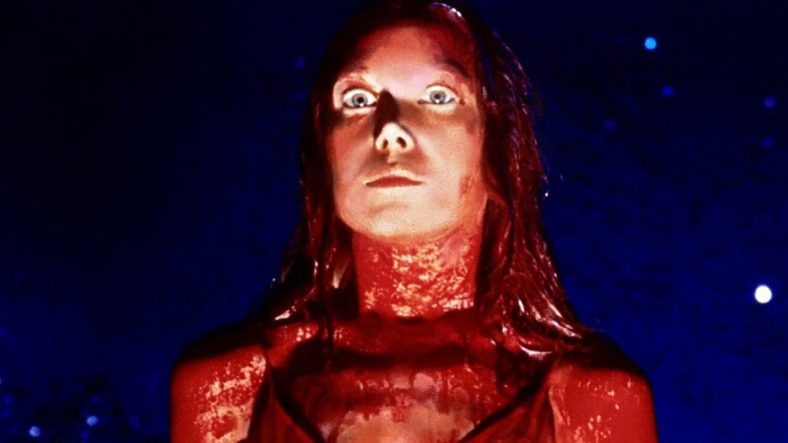It’s Okay if Your Horror Favorites Are Gay

Horror is queer. That much is not in dispute. Horror is innately transgressive, and for large swaths of modern history, queerness has been conceptualized as much the same. As a result, in an industry that writ large prohibited or considerably censored queer elements, filmmakers had to get creative. Before the days of new queer extremity, filmmakers coded characters, settings, and the minutiae of their narratives with elements distinctly recognizable to queer audiences. Conspicuous as it might seem now, if contemporaneous audiences weren’t looking for it, they weren’t going to see it.
That’s not to say, of course, that horror is queer enough. It isn’t. While horror stretches the parameters of on-screen representation (Netflix’s Fear Street trilogy comes to mind), matter-of-fact representation is no less evasive than Elly Kedward (an arguable queer icon) herself. Scream (2022), a franchise replete with queer iconography, only had its first indisputably queer main player in its most recent entry (no, Robbie and Scream 2 bodyguard don’t count). So, while the landscape of recognizably queer characters expands in the best possible ways—as protagonists and villains alike—film is an immutable medium in a sense. In other words, the works of the past remain the works of the past; nothing can be done to change them.
Also Read: Barb From ‘Black Christmas’ (1974) Is A Bisexual Icon
Resultantly, queer audiences were left with identifying links and queer characterization where there might not have been any. Barb (Margot Kidder) from Black Christmas comes to mind, as does Carrie White (Sissy Spacek). Jennifer’s Body endures in no small part because of its almost mundane bisexual elements. In the world of Jennifer’s Body, sexuality just is, and it isn’t worth making a fuss over. That’s a good thing.
The classics and the icons of the last century, though, aren’t so matter-of-fact. Straight horror was and is still the default. So, identification—a kind of desperate clinging to any thread that might generously be called queer—was all that remained. People like to see themselves on screen. In a genre whose most popular outputs in the last century all but neglected several different identities, queer audiences had to look really, really hard. In horror, audiences can and should see their understanding reflected in the characters on screen. They can and should see resilience in what they’re being shown. Most importantly, they can and should see their identity in the core of another character’s personhood.
That’s what makes horror uniquely curative; it’s a genre that interrogates and rips open old wounds, a gnarly affair that makes healing and growth possible. Horror is about the outcasts and the weirdos, the people who don’t quite feel they fit in common, hegemonic spaces. It’s about isolation and repression and the horrible, awful things that surface when something stays buried for too long.
Also Read: Queer Horror ‘Hypochondriac’ Gets To The Heart and Horror of Mental Illness [SXSW 2022]
Too often, though, there’s this misguided notion to preserve the ideals of the past, to resist contemporary colorings of classic horror characters. Because Halloween never says Laurie Strode is queer, she can’t be. Carrie White resonated profoundly with some straight girls, so she absolutely must not, under any circumstances, be rendered queer. It’s strange because so much of the horror landscape is heterosexual; there’s no shortage of characters to grab with a crane game and identify with. Imagine being queer.
Imagine living in a state where the legislature is still debating whether a core component of your identity is appropriate for a public-school curriculum. Imagine dropping your voice just an octave lower when you need to buy gas or get your oil changed. Imagine presenting your boyfriend as a nebulous other until you can properly assess whether the space you’re in is safe enough to properly introduce him as what he is. If plucking some heterosexual horror character from the reeds, identifying with what they are, and imposing marginal queer elements onto their characterization helps in even the smallest capacity, so be it.
Also Read: A Quick Streaming Guide of Black Queer Characters in Horror
Queer audiences have been consuming straight horror for decades, and oftentimes, there’s no complaint. Queer audiences are just as capable of finding strength in Sidney Prescott (certifiably straight) or Nancy Thompson (straight but with bad taste) as they are with objectively, clear-cut queer characters. Why is the reverse so hard? How is it deemed iconoclastic to retroactively imbue conventionally straight characters with queer elements? Why is reinterpreting the mythos of any respective final girl with queer elements a punishable affront? It’s no different than what queer audiences have been doing for years— finding parallels in a person who’s just a little different from them.
I’m fortunate enough to be inoculated from most of what queer existence entails in 2022. I have a supporting boyfriend, a great family, and a gaggle of friends to whom my identity simply does not matter. Luckily, whether with family born or found, that’s proving true for more people each and every day. Still, there are pockets of prejudice, moments of strife and conflict, both interpersonally and culturally, that make it uniquely difficult in a way only queer identities truly understand. If the cure for that is a gay ass Babadook, then the cure for that is a gay ass Babadook. Full stop.
Categorized:Editorials News

